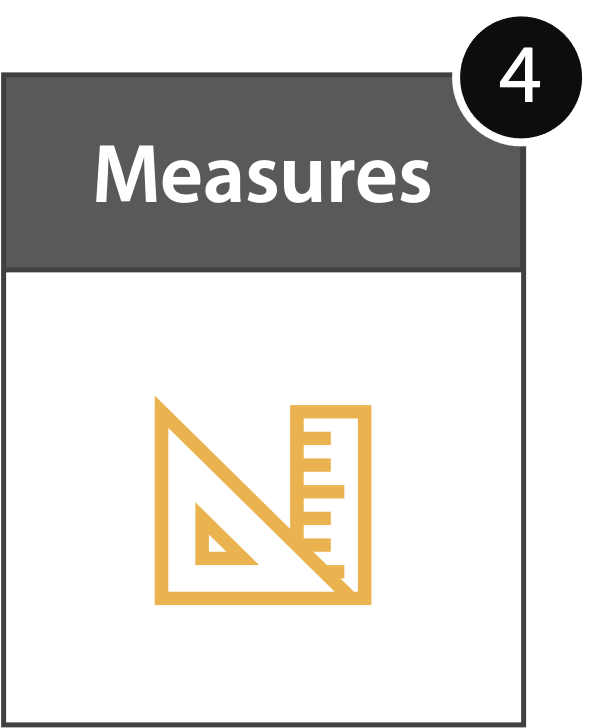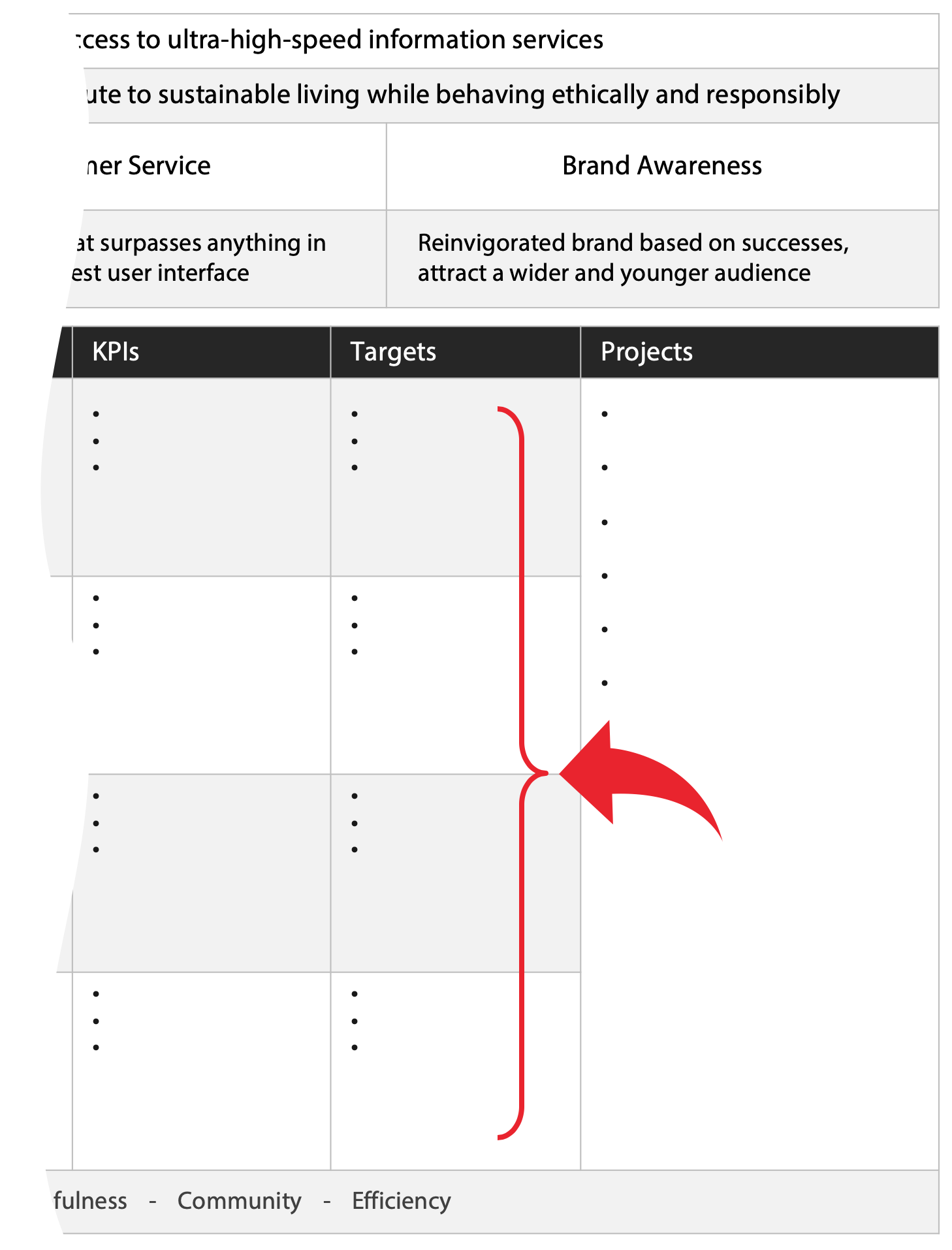STRATEGIC PLANNING PROCESS
Step Four - Measures
Providing evidence that your strategy is on track (or not!)
Measures, often known as KPIs
A KPI is something that can be counted and compared; it provides evidence of the degree to which an objective is being attained over a specified time. In short, it’s the measure of how well you’re achieving your objectives.
So let’s take our previous objective example: “reduce the number of days taken to convert a qualified lead into a sale” and create a KPI.
How to create KPIs
First off, we have to see what can be tangibly measured. In this case, it’s days, qualified leads and sales.
Next, we have to differentiate between lead and lag KPI’s. The go-to when creating KPI’s is usually lag. Why? Because it’s easier. And everyone loves the easy way out, right? Lag KPI’s provide proof of success or failure; think of them as the scales going up or down when you’re on a diet. However, lead KPI’s are just as important to create. These are the actions that will help you succeed – using the diet example it’s the exercise you do and calories you count to lose weight. They are harder to define but are just as important.
So, when thinking of our example objective – “reduce the number of days taken to convert a qualified lead into a sale” – our measurable KPI could be – “the average number of days between a qualified lead and sale”.
Next steps
Once you’ve created your KPI’s, they should be ranked in order of importance, ensuring that the right things are measured. From low to medium to high, where does your KPI fit? Which KPI is more applicable than others?
With your final list of KPI’s, it’s time to assign ownership. You’ve got to get the right person for the right job, otherwise, all your hard work will go right down the drain! Ownership of KPI’s must belong to one individual, rather than a department or team. This ensures the work actually gets done (rather than passed around from one person to another) and positive outcomes are achieved.
Setting thresholds
KPI’s only work when they are comparable to something. There needs to be an upper and lower limit to truly see how well they are performing. These limits are known as thresholds.
Your thresholds will be based on your targets, so make sure they are reasonable and achievable. You’ll need to clearly state what is both acceptable and unacceptable when recording results.
There are many different ways you can keep track of your KPI’s, for example, the in business the most common is Red, Amber, Green or RAG.
To get the most out of this workshop download the Strategic Planning Workbook, the Strategic Plan Summary one-page presentation and the Strategic Plan Template from the Intrafocus website.








